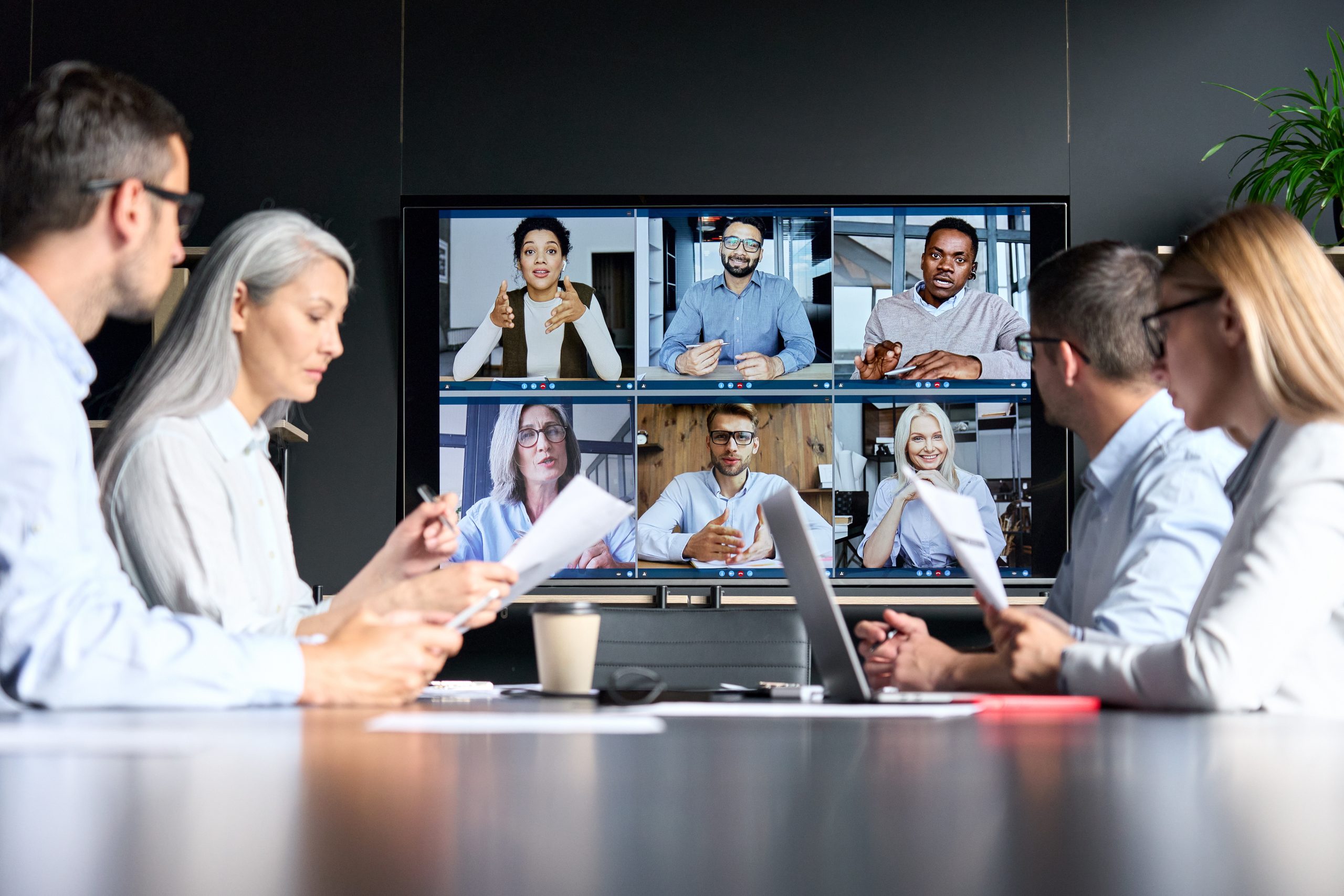
A hybrid workplace, in which some or all workers operate remotely at least a few days out of the week, has become a reality for many companies in the past few years. One survey found 74% of U.S. companies are using or making plans for a hybrid work model.
As hybrid work becomes permanent for more companies, it is a good idea to audit your hybrid workplace technology to identify sticking points and opportunities to improve. Below are seven questions to ask your team as you audit your hybrid work experience.
1. Are we fully connected?
All-over connectivity is an expectation today. The emphasis on collaboration between your in-office and remote workers is only emphasizing the importance of being able to connect with colleagues anywhere. As a result, it’s important that collaboration spaces, cafeteria, and outdoor areas have reliable Wi-Fi. Hosting all files in the cloud further allows employees to work wherever they need to be today.
Some organizations are upgrading to Wi-Fi 6 capable access points and laptops, as this update can push more data across the wireless network. If your organization is facing network capacity issues, this is an area to examine.
2. Are we secure end-to-end?
The need for good cyber hygiene is nothing new, but there’s almost always opportunities here to improve. Any regular workplace technology audit should examine security from end to end. Are employees fully securing all devices with strong passwords? Are devices regularly being updated with the latest security patches? Do network accounts require multi-factor authentication? More important yet, does your organization have regular training or reminders to employees to comply with up-to-date cybersecurity practices?
3. Are there noise conflicts?
Noise can be an issue for remote workers and in-office personnel. A good starting place is to invest in high-quality webcams, speakers, headsets, and microphones. It’s also important that equipment is well positioned and adjusted so that it doesn’t magnify the sound of every pen drop or paper shuffle.
Remind employees, too, that there’s a responsibility to minimize disruption to neighbors while collaborating with remote colleagues. That may mean using headsets in open spaces or establishing distinct areas for hybrid collaboration. That may also help minimize distracting in-office chatter that makes it difficult for remote workers to hear the conversation.
4. Do we need to improve lighting?
There’s ample evidence out there that good lighting is conducive to a comfortable and productive work experience. The same is true of the hybrid work experience. Natural daylight is best for improving on-camera visibility. However, ring light solutions long used to support on-camera lighting are more readily available, and affordable, than ever.
5. Could it be easier to collaborate?
Content sharing can become unnecessarily complicated. Fortunately, there are a number of workplace technology solutions available today that make it easy for every person in the meeting to wirelessly share content with other participants. These meeting platform-agnostic solutions allow anyone in the meeting space to wirelessly share their device’s display on easy-to-see shared screens for an improved AV experience.
6. Are practices standardized?
When employees use a range of meeting platforms, project management tools, and collaboration spaces, you can’t present a cohesive front as an organization. It can lead to delays in downloading software updates when it’s time to connect or difficulty finding the right button or tool when using an unfamiliar platform.
While standardization is important, it’s also essential to know when to allow room for flexibility. For example, some team members may work best using collaboration solutions like Slack, while others prefer to connect via text or a quick call. Either way, it’s best to let employees know clearly when to standardize and when it’s okay to pick and choose their preferred workplace technology. If you haven’t done so already, expand your workplace policy to include guidelines around these and other hybrid work expectations.
7. How is the in-office experience?
In designing hybrid work considerations, it’s critical that the importance of the in-office experience not be overlooked. Whether you’re expecting all employees to return to the office or encouraging purpose-driven office time, your real estate should give employees a reason to be present. Comfortable chairs, sit-stand desks that encourage healthy movement, and attractive art are a good start. An audit can further help by ensuring those investments aren’t wasted because, for example, the comfortable new couch is nowhere near a power outlet or the inviting patio upgrade lacks Wi-Fi access.
Sort through the noise with a workplace experience audit
There are a lot more workplace technology solutions available today to support your hybrid environment. In fact, there are so many solutions that the noise can be overwhelming. An audit can help clearly identify your needs and guide you toward the right solutions. In some cases, your organization might be better served by having a third party come in and help identify gaps or opportunities. A third-party perspective is often helpful in identifying issues that as individuals we might be used to working around.
Have questions about how to improve your hybrid work experience? Let us know! Contact CRUX today.